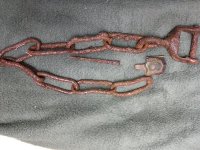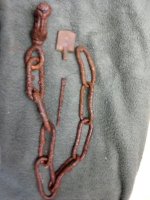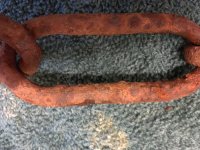castletonking
Full Member
I was at the 18th century honey hole today,it was square nail sunday,i found a bunch,also found this chain,no idea on the age,could be 20 years old it could be 100.any chain experts out there,that might have any ideas? but ya not a terribly productive day,but any day detecting is a day i'm not at work.everythings shiny because i tried to wash the dirt off,the chain was approx 4 inches deep in the soil.
Amazon Forum Fav 👍
Attachments
Upvote
0







